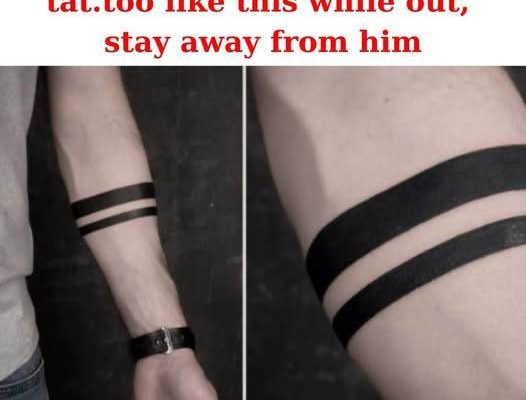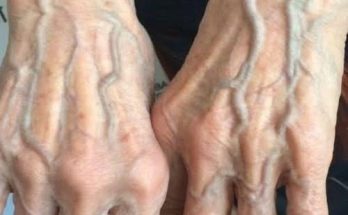Tattoos have long been a powerful medium for self-expression, often carrying deep personal meaning or significant cultural value. Over the years, certain tattoo designs have become closely associated with specific groups or identities, reflecting shared experiences or common symbols. Recently, one particular tattoo design has caught the attention of many, sparking conversations and curiosity about its potential connection to the LGBTQ+ community. While tattoos are deeply personal and their meanings vary from individual to individual, this design has brought forth discussions about identity, expression, and the subtle ways people communicate their sense of belonging.

A Symbol of Identity
For some, this tattoo serves as a quiet yet impactful symbol of identity within the LGBTQ+ community. It’s believed that many individuals who wear this design do so as a way to connect with others or to express pride in their identity. However, it’s essential to note that not everyone with this tattoo necessarily identifies as LGBTQ+. Tattoos are as diverse as the people who choose them, and the reasons behind a design can range from aesthetic preference to personal symbolism.
For those in the LGBTQ+ community, this tattoo might act as a marker of solidarity, a reminder of resilience, or simply a way to celebrate who they are. It’s a subtle, often private statement that can resonate deeply with those who recognize its significance while remaining understated to the outside world.
Why Tattoos Hold Meaning
Tattoos are a timeless form of storytelling and self-expression, spanning cultures and generations. They can commemorate important life events, pay tribute to loved ones, or reflect deeply held beliefs and values. The LGBTQ+ community, like many others, has embraced tattoos as a means of expressing individuality and connection.
For some, tattoos represent pride in their identity and a celebration of their journey. They can symbolize the challenges faced and overcome, or the sense of belonging within a community that understands and supports them. In many ways, these tattoos go beyond mere decoration; they become an extension of the wearer’s personal narrative, a permanent marker of their experiences and emotions.
Certain designs carry extra weight because of their shared recognition within a community. A specific symbol, shape, or design might resonate broadly among those who share similar experiences, creating a sense of unity. For those who wear these tattoos, they are more than ink on skin—they are a badge of honor, resilience, and authenticity.
The Importance of Avoiding Stereotyping
While tattoos can be meaningful, it’s crucial to avoid jumping to conclusions about a person’s identity based on their ink. Assuming someone’s story or background solely because of their tattoo can lead to misunderstandings or even perpetuate stereotypes. Tattoos are deeply personal, and their meanings are not always obvious to outsiders.
For instance, someone might choose a particular tattoo design for reasons entirely unrelated to its perceived cultural or community significance. They might simply find the design visually appealing or feel that it represents a unique part of their personality. Approaching conversations about tattoos with respect and curiosity allows for a deeper understanding of the individual’s story, rather than making assumptions based on appearances.



